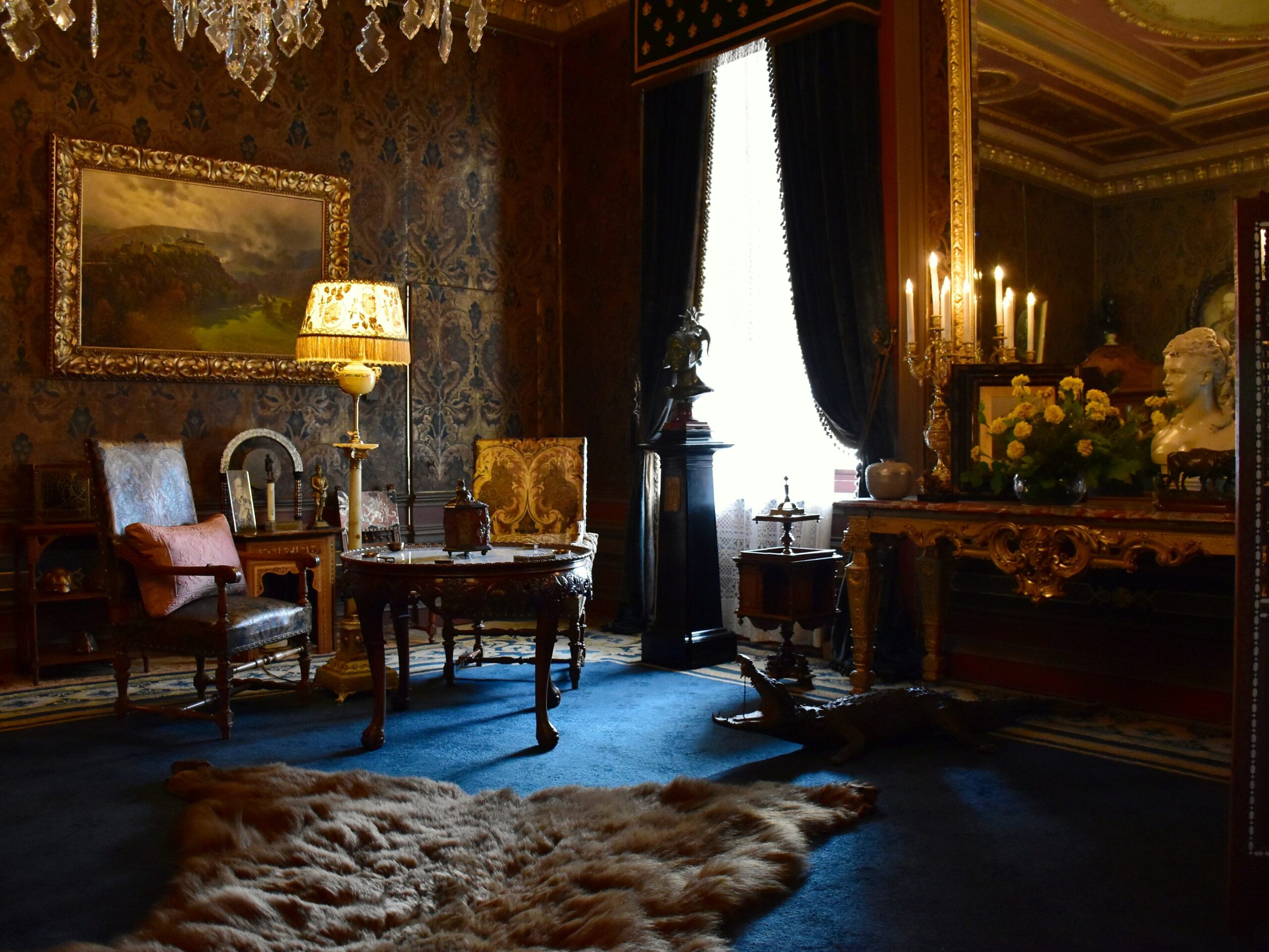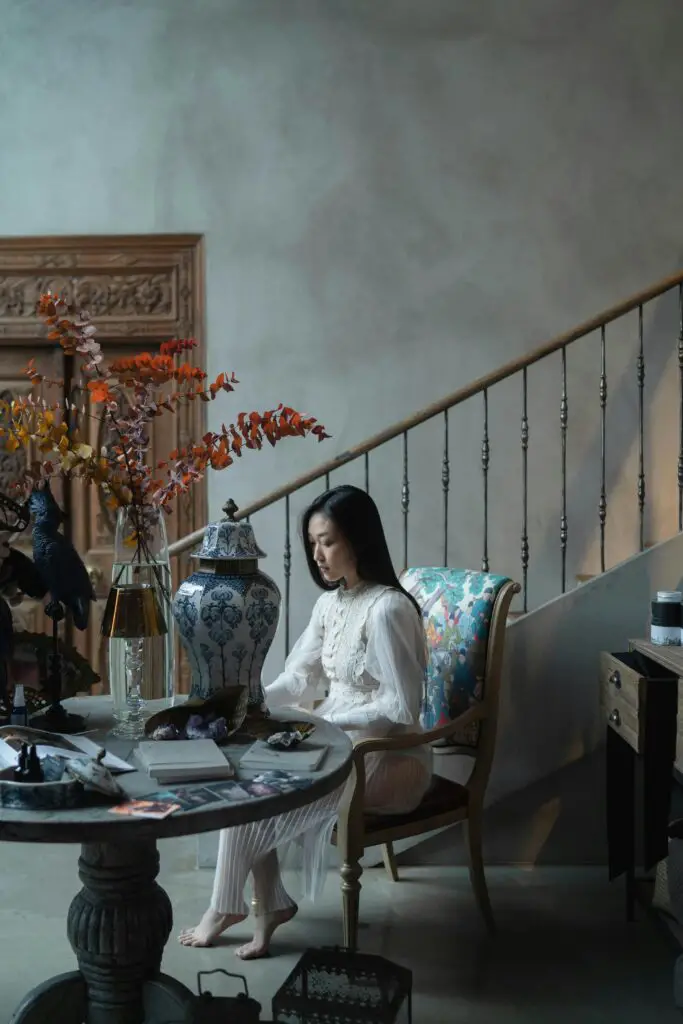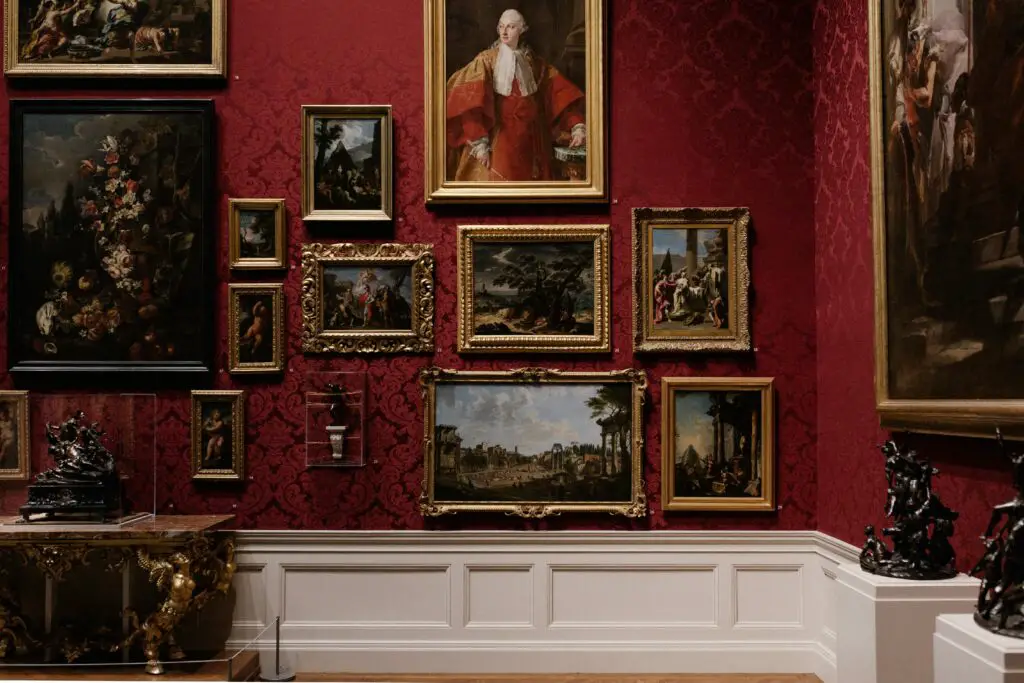Look for Curved Lines in Queen Anne Furniture

Queen Anne furniture, popular in the early 1700s, is known for its elegant, curved lines and graceful cabriole legs. If you see chairs with “S” shaped curves or tables with rounded edges, you might be looking at a piece from the Queen Anne era.
Spot the Heaviness of Baroque
Baroque furniture, prominent in the late 1600s, is bold, heavy, and highly ornamented. Look for dramatic carvings, large proportions, and rich materials like marble and gilded finishes. If the piece feels grand and ornate, it’s likely from the Baroque period.
Recognize the Simplicity of Shaker Style
Shaker furniture, crafted in the late 1700s to mid-1800s, is defined by simplicity, function, and craftsmanship. These pieces are unadorned and made of fine woods like cherry and maple. Look for clean lines, practical design, and an overall minimalist aesthetic.
Identify Georgian Furniture by its Symmetry
Georgian furniture (1714-1830) is characterized by its balance and symmetry, often featuring intricate carvings and classical motifs like shells or acanthus leaves. Mahogany was a favored wood during this era. Look for claw-and-ball feet and precise proportions.
Spot the Intricacy of Rococo
Rococo furniture from the 18th century is all about decorative flair. Think intricate carvings, gilded edges, and floral or shell motifs. If a piece feels light and playful with asymmetrical design, curving forms, and lavish details, you’re likely looking at Rococo.
Recognize the Neoclassical Influence in Federal Style

Federal furniture, popular in the late 1700s and early 1800s, was influenced by Neoclassical designs. Look for straight lines, geometric shapes, and inlays of contrasting woods. Many Federal pieces also feature delicate carvings of eagles, stars, and other patriotic symbols.
Distinguish Victorian Furniture by Its Ornateness
Victorian furniture, produced from the mid-1800s to the early 1900s, is known for its opulence and variety. Pieces often have tufted upholstery, dark woods, and intricate carvings. If you see rich fabrics like velvet paired with heavily decorated wood, you’re likely looking at a Victorian piece.
Spot the Eastlake Style’s Simple Ornamentation
Eastlake furniture, popular in the late 1800s, falls within the Victorian era but stands out with its cleaner, more geometric designs. Look for shallow carvings, straight lines, and minimal curves. Unlike heavily ornate Victorian pieces, Eastlake is more understated.
Recognize Art Nouveau’s Flowing, Organic Forms
Art Nouveau, popular from the late 1800s to the early 1900s, is defined by its flowing, organic shapes inspired by nature. Look for sinuous lines, floral motifs, and fluid curves in the design of chairs, tables, and armoires.
Identify Arts and Crafts Furniture by Its Craftsmanship
The Arts and Crafts movement (late 1800s to early 1900s) focused on handcraftsmanship and simple, sturdy designs. Oak was commonly used, and pieces often have a rustic, handmade feel. Look for exposed joinery, straight lines, and minimal ornamentation.
Recognize Art Deco by Its Sleek, Geometric Lines

Art Deco furniture from the 1920s and 1930s is sleek, bold, and full of geometric patterns. If a piece features clean lines, exotic woods like ebony, and luxurious finishes like lacquer or chrome, you’re likely looking at Art Deco. Look for angular, streamlined shapes that scream “modern” for the era.
Spot Mid-Century Modern’s Minimalist Vibe
Mid-Century Modern furniture, popular from the 1940s to 1960s, is known for its minimalist design and functionality. Look for pieces with clean lines, tapered legs, and a focus on form following function. Teak, walnut, and birch are common materials, often paired with bright colors or sleek upholstery.
Identify Colonial Revival by Its Nostalgic Elegance
Colonial Revival furniture, popular in the late 19th to mid-20th century, reinterprets classic American and European designs. Pieces often blend Georgian, Federal, and Queen Anne styles. Look for traditional shapes, elegant curves, and details like turned legs and decorative finials.
By mastering these 13 tips, you’ll be able to instantly identify the era of antique furniture with confidence, making your collecting journey much more rewarding. Happy hunting!


